Physisorption
Needs high activation energy
Depends on the surface area
Results into unimolecular layer
Increases with the increase of temperature
The correct Answer is:B
Step by step video, text & image solution for Physisorption by Chemistry experts to help you in doubts & scoring excellent marks in Class 12 exams.
Topper's Solved these Questions
- BOOK - AAKASH INSTITUTECHAPTER - SURFACE CHEMISTRY EXERCISE - ASSIGNMENT SECTION - B11videos
SURFACE CHEMISTRY
- BOOK - AAKASH INSTITUTECHAPTER - SURFACE CHEMISTRY EXERCISE - ASSIGNMENT SECTION - C11videos
SURFACE CHEMISTRY
- BOOK - AAKASH INSTITUTECHAPTER - SURFACE CHEMISTRY EXERCISE - TRY YOURSELF42videos
SURFACE CHEMISTRY
- BOOK - AAKASH INSTITUTECHAPTER - STRUCTURE OF ATOM EXERCISE - ASSIGNMENT ( SECTION -J) Aakash Challengers Questions12videos
STRUCTURE OF ATOM
- BOOK - AAKASH INSTITUTECHAPTER - TEST 1EXERCISE - EXAMPLE111videos
TEST 1
Similar Questions
Which of the following statements is not true?
a. Both physisorption and chemisorption are exothermic.
b. Physisorption occurs with increase of free energy.
c. Physisorption requires low activation energy but chemisorption requires high activation energy.
d. The magnitude of chemisorption increases and that of physisorption decreases with rise in temperature.View SolutionIn a particular case of physisorption, magnitude of enthalpy change and entropy change were observed to be 28 kJ/mole and 100 J/mole-K. Calculate the minimum temperature (in .∘C) above which physisorption will become non spontaneous.
View Solution
Knowledge Check
- Question 1 - Select One
The amount of gas adsorbed (x/m) is the function of temperature and pressure, which can be shown as under
xm= f(p,T)
The variation x/m and p, at constant temperature is known as adsorption isotherm
i.e., x/m=f(p) at constant temperature
Seven type of physisorption isotherms are known. Some of them are shown below

Physisorption Type I. Where there is formation of monolayer on the surface of adsorbent, this type of curve is obtained.
Physisorption Type II. The transition point 'X' of this physisorption isotherm indicates, that the formation of mono layer is complete and that of multilayer is started.
Physisorption Type III. This isotherm has no transition point. In this type of curve, the multimolecular starts before the completion of monomolecular layer.
On the basis of this comprehension, answer teh following question from the physisorption isotherm of a gas on a solid shown as under.
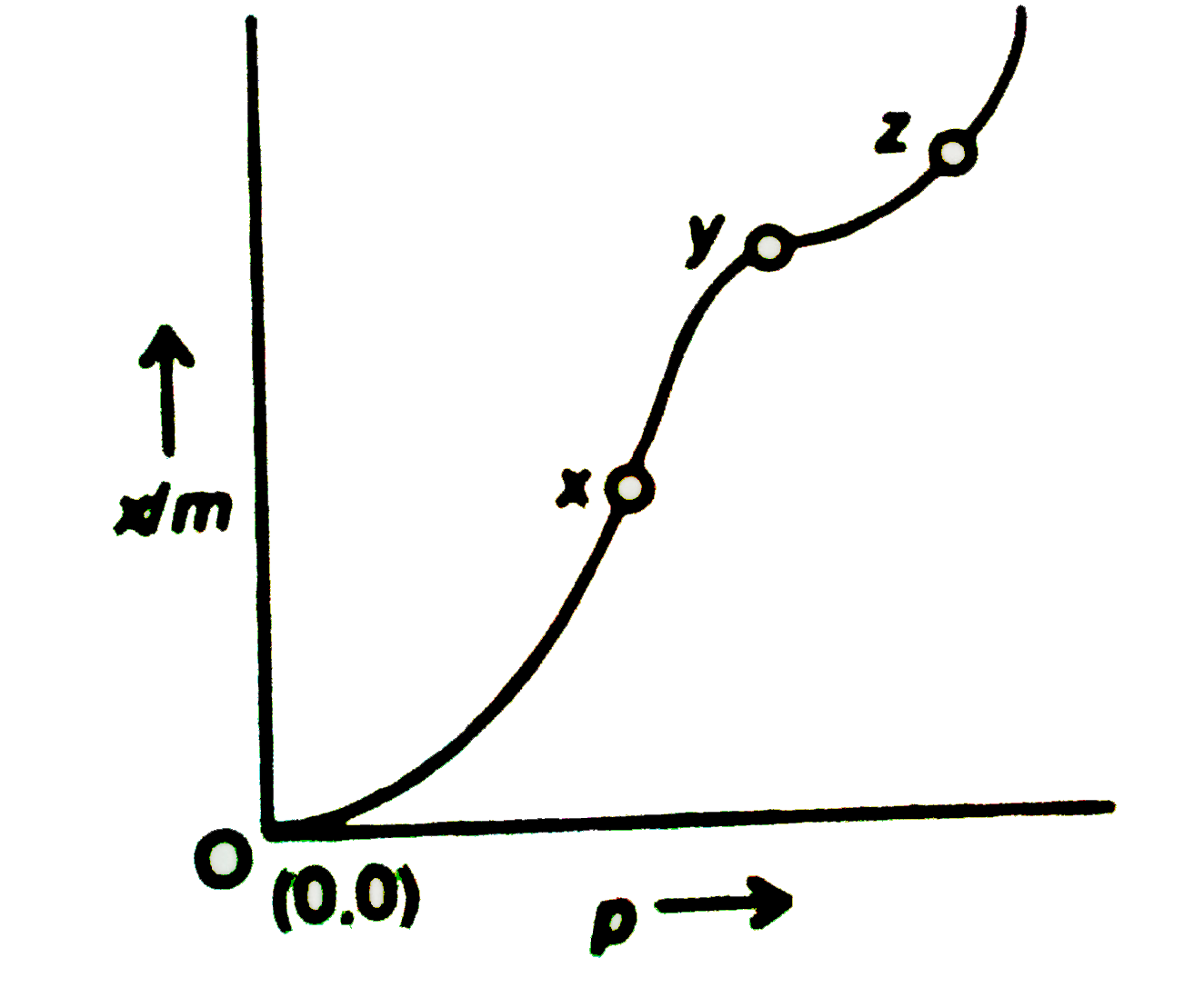
The portion ''OX'' of the physisorption isotherm representsAx/m is directly proportional to pBx/m is linear function of pressureCadsorption isotherm has no transition point, the formation of multi-molecular layer starts before the completion of monomolecular layerDBoth B and C - Question 2 - Select One
The amount of gas adsorbed (x/m) is the function of temperature and pressure, which can be shown as under
xm= f(p,T)
The variation x/m and p, at constant temperature is known as adsorption isotherm
i.e., x/m=f(p) at constant temperature
Seven type of physisorption isotherms are known. Some of them are shown below

Physisorption Type I. Where there is formation of monolayer on the surface of adsorbent, this type of curve is obtained.
Physisorption Type II. The transition point 'X' of this physisorption isotherm indicates, that the formation of mono layer is complete and that of multilayer is started.
Physisorption Type III. This isotherm has no transition point. In this type of curve, the multimolecular starts before the completion of monomolecular layer.
On the basis of this comprehension, answer teh following question from the physisorption isotherm of a gas on a solid shown as under.
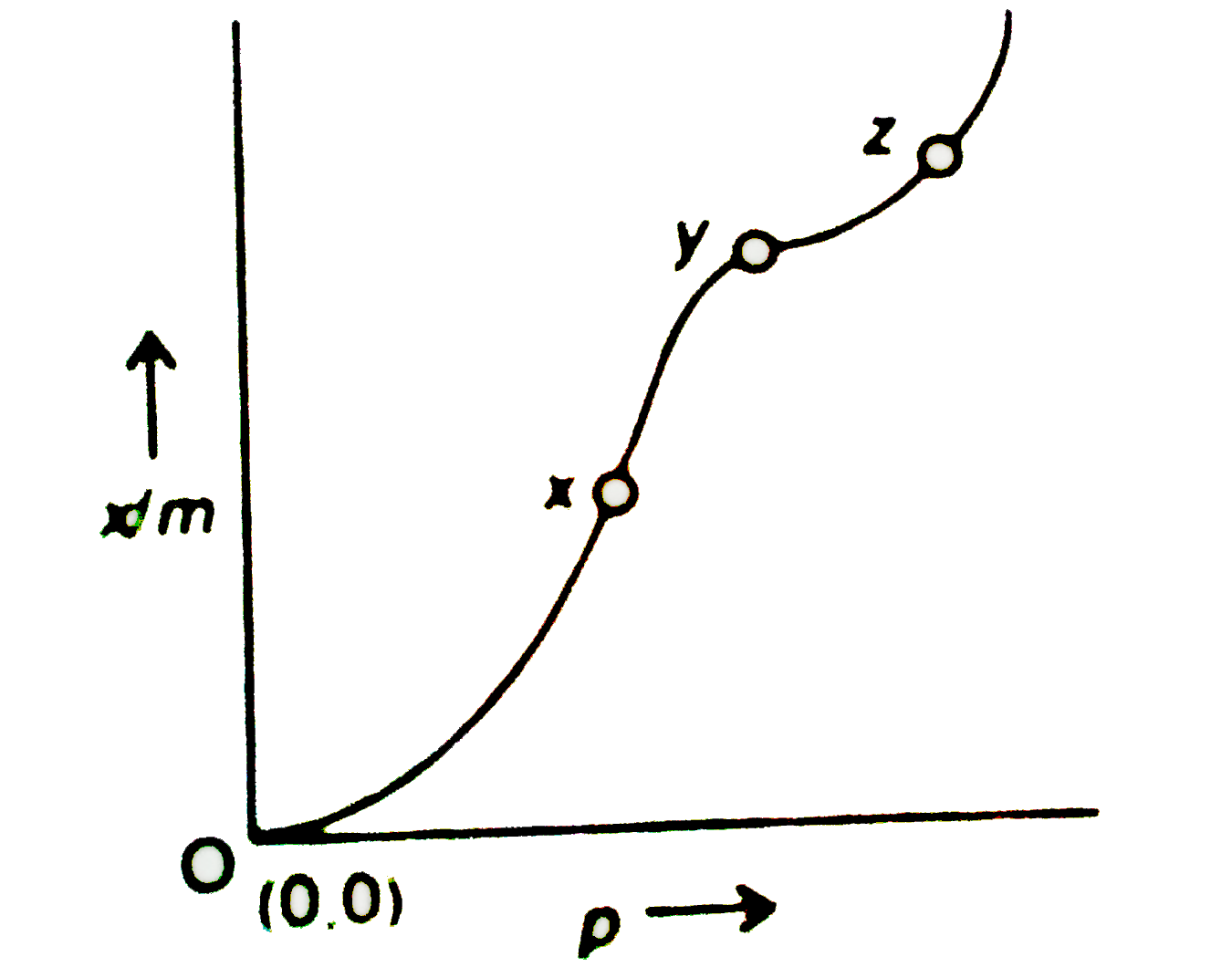
The point Z of the physisorption correctly representsAJust beginning of formation of multilayerBJust beginning of formation of monolyerCJust completion of multilayer and just formation of monolyerDxm∝pn where n > 1 - Question 3 - Select One
The amount of gas adsorbed (x/m) is the function of temperature and pressure, which can be shown as under
xm= f(p,T)
The variation x/m and p, at constant temperature is known as adsorption isotherm
i.e., x/m=f(p) at constant temperature
Seven type of physisorption isotherms are known. Some of them are shown below
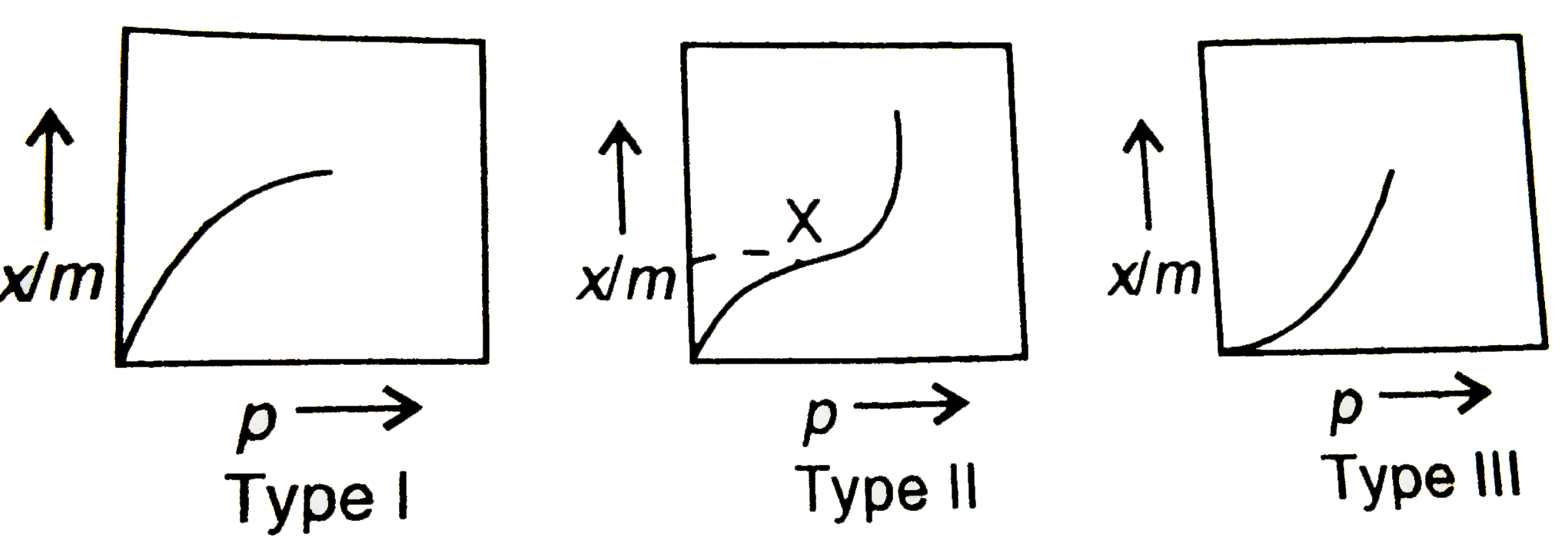
Physisorption Type I. Where there is formation of monolayer on the surface of adsorbent, this type of curve is obtained.
Physisorption Type II. The transition point 'X' of this physisorption isotherm indicates, that the formation of mono layer is complete and that of multilayer is started.
Physisorption Type III. This isotherm has no transition point. In this type of curve, the multimolecular starts before the completion of monomolecular layer.
On the basis of this comprehension, answer teh following question from the physisorption isotherm of a gas on a solid shown as under.
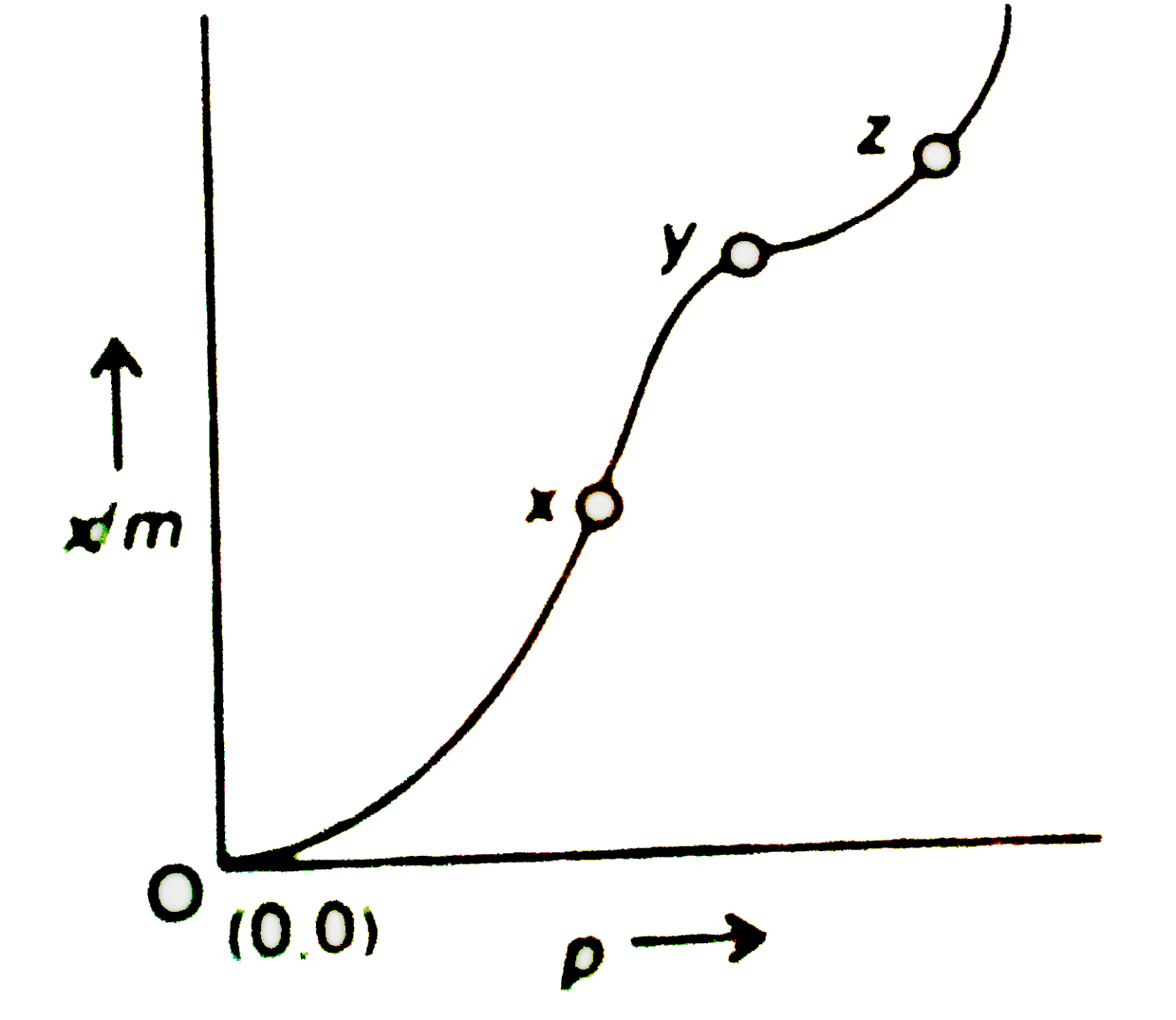
The point Y of physisorption isotherm correctly representsAformation of monolayerBformation of multilayerCfirst monolayer formation thereafter the formation of multilayerDnone
Giving appropriate examples, explain how the types of processes of adsorption (physisorption and chemisorption) are influenced by the prevailing temperature , the surface area of adsorbent and the activation energy of the process?
View SolutionThe amount of gas adsorbed (x/m) is the function of temperature and pressure, which can be shown as under
xm= f(p,T)
The variation x/m and p, at constant temperature is known as adsorption isotherm
i.e., x/m=f(p) at constant temperature
Seven type of physisorption isotherms are known. Some of them are shown below

Physisorption Type I. Where there is formation of monolayer on the surface of adsorbent, this type of curve is obtained.
Physisorption Type II. The transition point 'X' of this physisorption isotherm indicates, that the formation of mono layer is complete and that of multilayer is started.
Physisorption Type III. This isotherm has no transition point. In this type of curve, the multimolecular starts before the completion of monomolecular layer.
On the basis of this comprehension, answer teh following question from the physisorption isotherm of a gas on a solid shown as under.
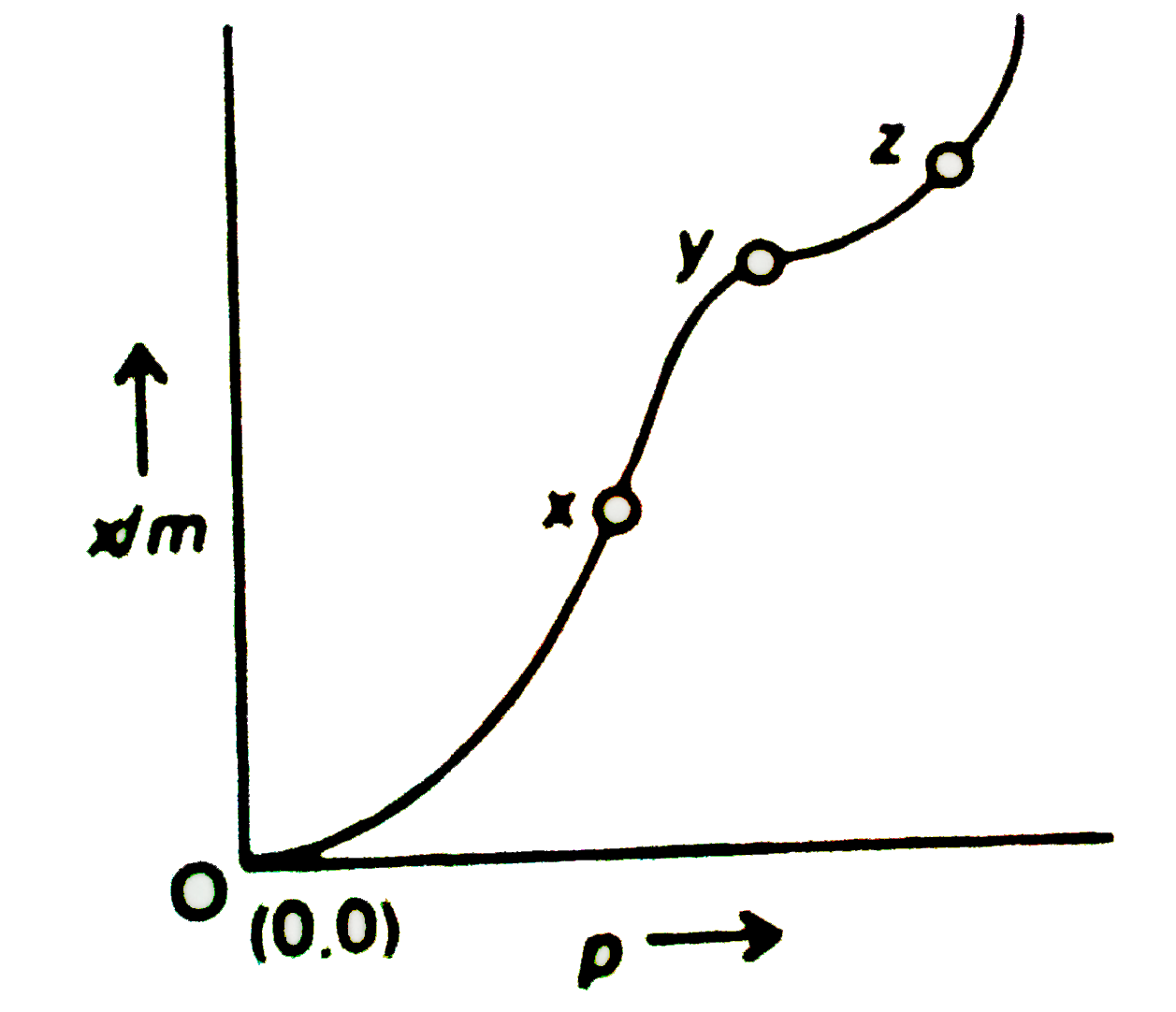
The portion XY of the curve correctly representsView SolutionThe correct statements pertaining to the adsorption of a gas on a solid surface are
(i) Adsorption is always exothermic
(ii) Physisorption may transform into chemisorption at high temperature
(iii) Physisorption increases with increasing temperature but chemisorotion decrease with increasing temperature
(iv) Chemisorption is more exothermic than physisoption, however, it is very slow due to higher energy of activationView SolutionThe correct statement(s) pertaining to the adsorption of a gas on a solid surface is(are)
(i) adsorption is always exothermic
(ii) physisorption may transform into chemsisorption transform into chemisorption at high temperature
(iii) physisorption increases with increasing temperature but chemisorption decreases with increasing temperature .
(iv) chemisorption is more exothermic than physisorption , however it is very slow due to higher energy of activation.View Solution

